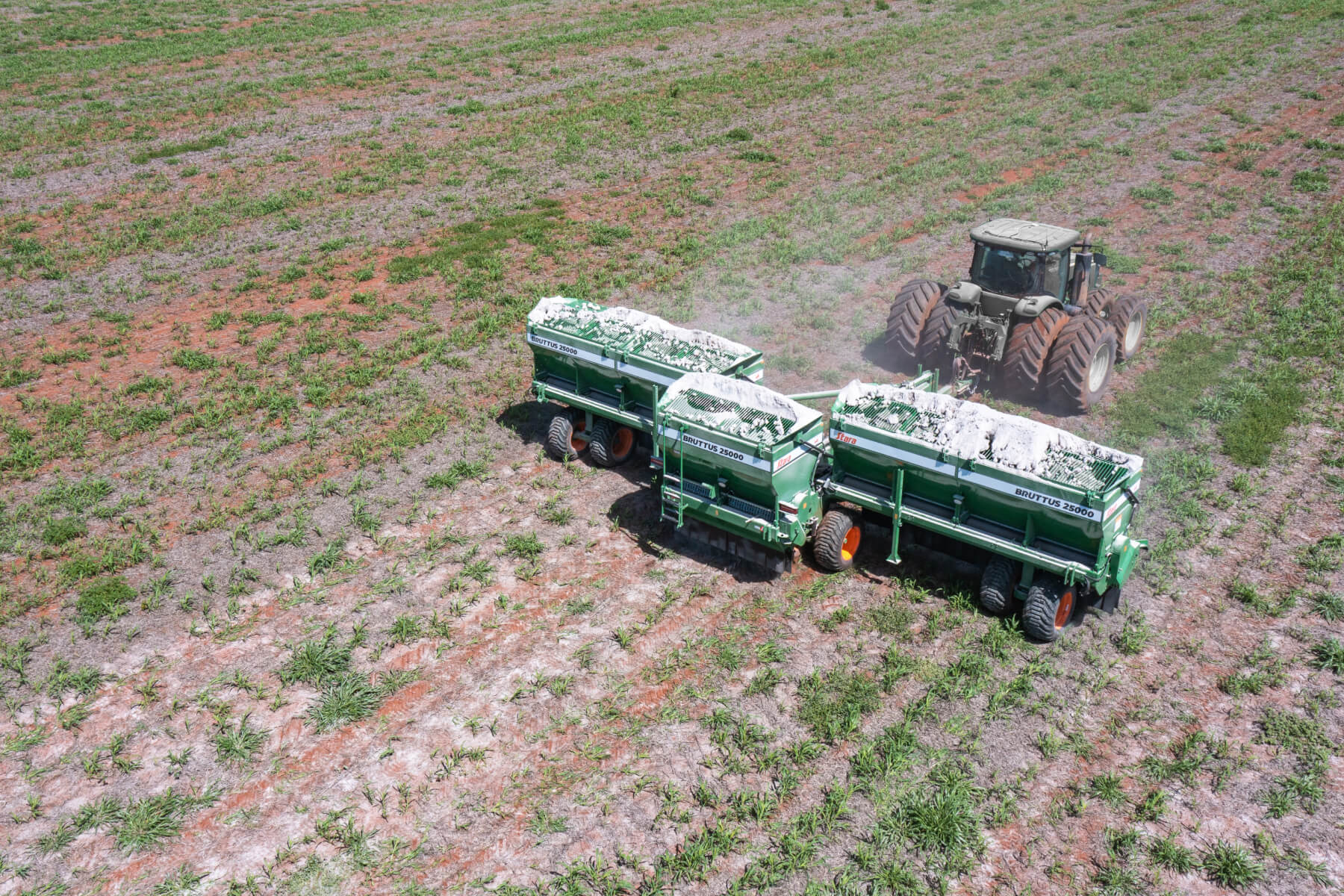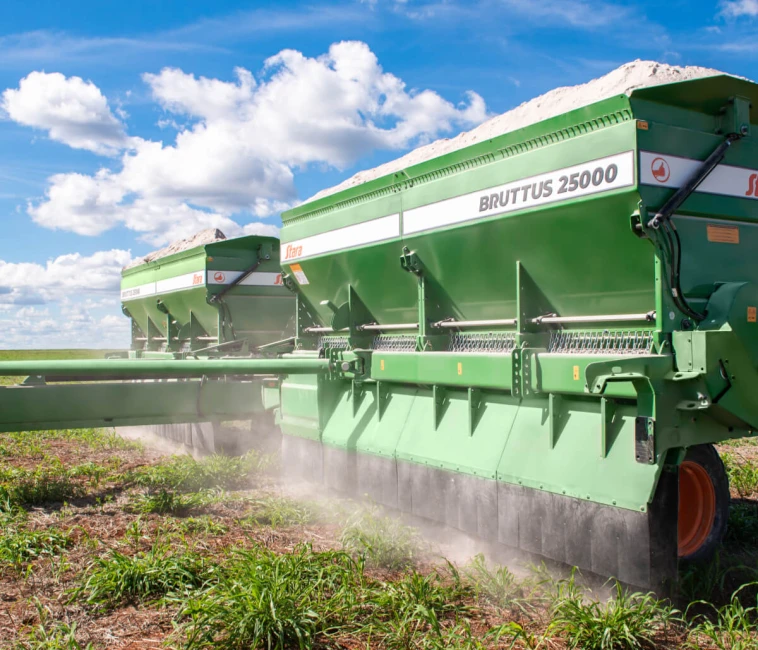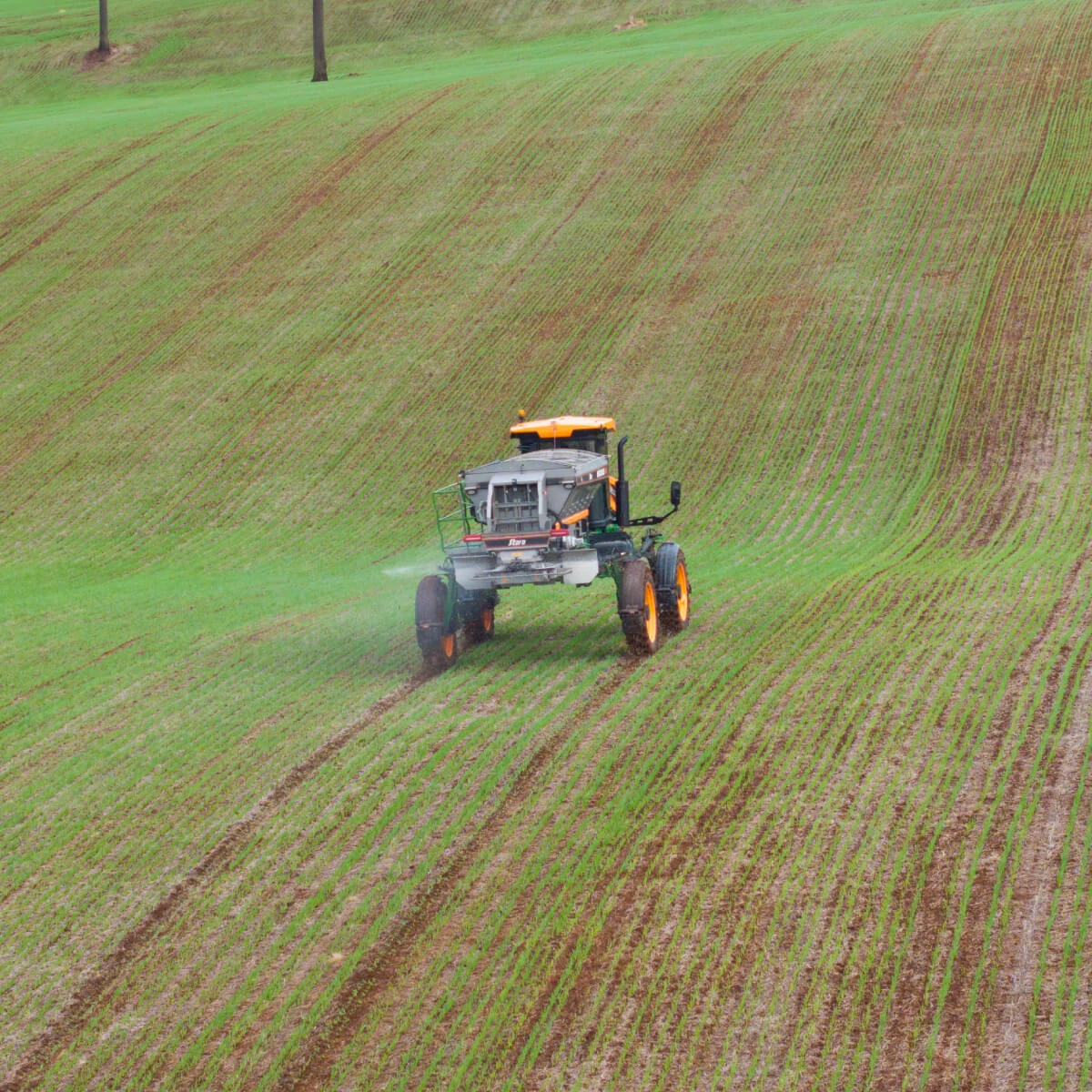The application of substance for soil regulation, such as lime, is an essential practice in soil management. It corrects acidity, improves the availability of nutrients, and creates ideal conditions for plant development.
However, if applied properly, it could cause input waste, loss of agronomic efficiency, and lower yields. For this reason, correctly using the lime spreader is so important when investing in the input.
In this article, you’ll understand what are the most common mistakes, how to identify them and how the Stara technologies help the operator to reach higher precision and savings in the field.
Why to avoid lime application waste?
Lime has a decisive role in fertilizer management: it corrects the soil pH, providing nutrients that are blocked by the plant in acid environments. Without this correction, the crop field produces poor efficiency when using fertilizers, and the productive potential is jeopardized.
As Dênis Eckert states, agronomist engineer, and Stara product analyst:
The lime application is carried out for the soil pH correction, for being in low levels, which sometimes affects the availability of nutrients for the plants.
When the spreader is not properly adjusted, two typical problems come up:
- Excess in some areas, resulting in unnecessary waste and cost;
- Plants with poor nutrients. Even after the fertilizer application, the soil is not suited for production.
This lack of uniformity results in irregular crops, with plants showing visible signs of deficiency or even reduced productivity across entire sections of the field.
See also: Preventive maintenance: a complete guide for agricultural machines | Stara
Most common wastes when using the lime spreader
The application of substance for soil regulation requires precise adjustment. When it is ignored, some factors jeopardize the operation efficiency.
Irregular application caused by calibration failure
When the spreader is not calibrated correctly according to the product density, the result is an application with no uniformity. Areas may be applied with different metering from the planned ones, impairing the nutritional balance of the soil.
Improper overlap due to the adjustment of the vanes
The vanes of the spinner disks are crucial to direct the input and set the application range width. An incorrect adjustment causes overlap or lack of product in certain areas, resulting in waste and correction fails.
Unfavorable weather, especially strong winds
The wind is one of the external factors that most affect the quality of the substances for soil regulation application. Under adverse conditions, the product is drifted away from the target range and the application performance drops significantly.
High speeds change the actual application rate
Too high speeds impair the planned metering, as the application rate no longer follows the machine travelling. As Dênis Eckert reinforces, agronomist engineer and Stara product analyst:
Too high speeds may affect the application quality. To correct it, Stara features a PWM system that controls the product metering according to the travelling speed.
These situations may be noticed differently. For lime, the color difference in the soil makes the mistakes visible. For other products, the effects are seen later, when the crop plant is growing, in stains, or the crop field with no uniformity.
How to ensure the correct adjustment of the lime spreader
Before starting operations, the operator should always have in mind three crucial points:
- Feedgate - adjust it according to the desired application rate;
- Product calibration - consider the lime density and other substances for soil regulation;
- Vanes of the spinner disks - adjust according to the range width and the application distance.
Other caution is to consider the terrain and weather conditions. The application width may vary from 8 to 14 metres and factors, such as the wind, require adjustments.
Travelling speed: precision is more important than hurry up
A frequent mistake is to operate at too high speeds to gain operating yield. In practice, it jeopardizes the application quality. On the other hand, too low speeds can negatively affect the application rate.
Keep the perfect speed range along with the technology that automates the rate control is the path to reduce waste and ensure uniformity.
Quick check-list before application
Before operating with the lime spreader, it’s important to review some basic points. These details look simple but set the application uniformity and avoid field waste. A careful preparation ensures higher precision and consistent results.
The first step is to adjust the feedgate according to the set rate. This adjustment sets how much input is applied and needs to match the technical recommendation for the field.
Then, calibrating the product is crucial. Each input features a different density, and without this measurement, the amount applied may vary a lot.
Other care is to adjust the vanes of the spinner disks as the desired application rate. The correct positioning ensures that the input is applied with uniformity, avoiding failures and overlap.
The travelling speed should be set carefully. Operating within the ideal range is essential so that the application rate is constant during the entire operation.
Finally, the operator needs to check the weather conditions, as the strong wind may impair the application quality and cause waste.
Five steps before application
|
Step |
What to check |
Why is it important |
|
1 |
Feedgate |
Ensuring that the application rate corresponds to the planned one. |
|
2 |
Calibration |
Each input has its own density; without calibration, the meter is incorrect. |
|
3 |
Vanes of the spinner disks |
They set the width and application direction, avoiding overlap or failures |
|
4 |
Speed |
Improper speeds change the actual rate applied in the field. |
|
5 |
Weather |
The wind interferes directly in application quality. |
Following this checklist helps the operator in the field safely and confidently that each detail has been taken into account. This routine reduces the risks of waste, ensures better usage of the input, and creates the ideal conditions so that the on-board technology of the Stara spreaders delivers its maximum performance.
Four Stara technologies that reduce waste
Stara invests in solutions that provide higher precision and ease the operator’s job. Among them:
1. Stara Spreading Application: allowing to measure the adjustment of the vanes by means of the profile test, ensuring uniformity and the coefficient of variation within the perfect one;
2. Hércules 6.0 electronic scale: controlling the volume of inputs remaining in the hopper, avoiding non-desired stops, and optimizing the supplying logistics;
3. Bruttus spreader: recommended for high uniformity levels. It applies by gravity by using the baffles, which reduce the segregation of particles and the wind action;
4. Variable rate: this resource applies lime and fertilizers according to the actual need of each field zone, reducing waste and boosting precision agriculture.
The role of technical assistance
Even with all the technology available on the lime spreaders, the human support is crucial. The Stara technical assistance makes sure the operator has more than the machine, but also the required knowledge to get the most out of it.
The support includes instructions about customized adjustments and calibrations, taking into account the specific conditions of each field and input applied. It also covers the follow-up of the periodic maintenance, which are fundamental to keep the spreader performance and prevent unexpected losses in the middle of the harvest.
Additionally, the technicians provide support for the usage of cutting-edge resources, such as the variable rate application and the spreading applications. Thanks to this follow-up, the operator feels confident to use all the on-board technology in a practical and efficient way.
In the end, Stara technical support acts as an extension of the field, providing guidance at every stage of the operation and ensuring consistent results, with greater precision and less input waste.
Conclusion
Preventing input application waste by using the lime spreader demands attention to adjustment details, consider the field conditions, and technology support.
In this article, you read about the PWM system, the spreading application, the electronic scale of Hércules 6.0, among other Stara solutions that help the farmer to apply inputs efficiently, reduce costs and ensure higher yields.
Did you like the hints and want to find out the agricultural machine that best suits your crop field?
Stop by a Stara dealer and find the most suitable equipment to boost your crop production. Request a quotation.










